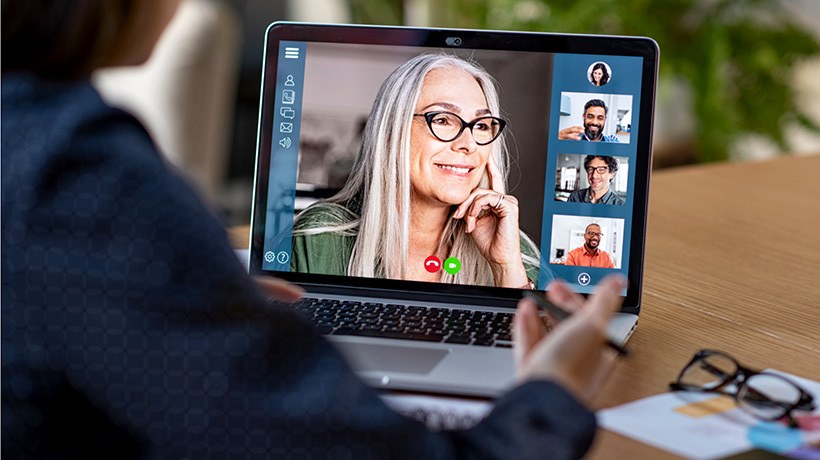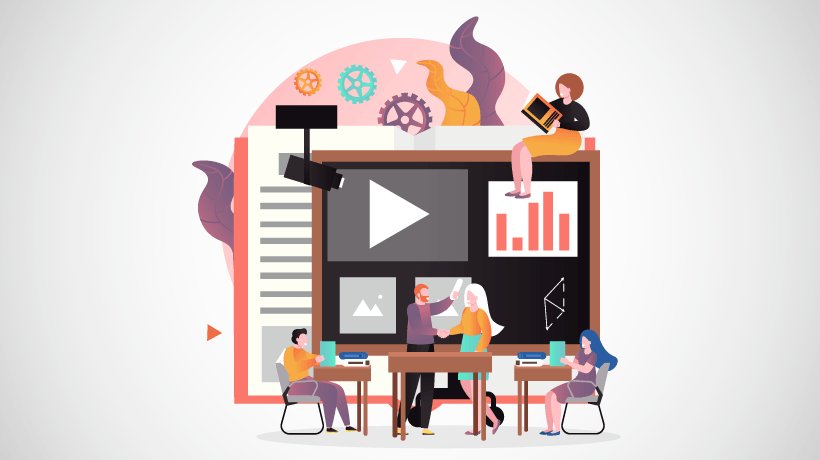eLearning Webcasts: Design With The Learner In Mind, Test, And Iterate
Webcasts are a low-cost, high-impact way to design and deliver impactful, live online, engaging learning for your learner audiences. You can design webcasts in 2-3 weeks at minimum and you can reach hundreds of learners in one micro-learning live session. After the webcast session ends, you can post the recording on your website and make it available to even more learners after the event. You can also create a podcast with salient snippets from the webcast conversation. Webcasts deliver a high return on investment for Learning & Development (L&D) organizations. This article offers seven tried and tested tactics you can consider for building and/or reviving your in-house learning webcast program.
7 Tips To Develop Winning eLearning Webcasts
Pick The Topic
Selecting the topic is key because it must be a topic that resonates and is relevant to your learner audience. To determine relevance look at your data. What challenges have teams in your organization faced recently? What skills are they seeking learning on? If none of that is available, stop by a few team meetings and listen in to pick up challenges, needs, and wishes that you can translate to a learning webcast. It is a good idea to create a webcast series so that you can tackle the running list of topics as one webcast will likely not deliver results.
Select The Date And Time
Next, pick the date and time slot. This is important because it must be a day and time slot in the week that learners can join in. Mondays and Fridays are usually not a good idea, while mid-week typically works. Perhaps you can pick the 12:00-1:00 pm ET time slot to accommodate various time zones. Set the event series on the calendar and send out the invite so that learners are informed and also can carve out the time each week or each month to attend. You want your web event to become a welcomed microlearning habit for your learners.
Curate The Speakers
A winning webcast format is a moderated discussion with three speakers. I like to include a speaker from industry, academia, and the non-profit or government sector to provide different angles on the same subject. When curating your speakers, I recommend focusing on as many layers of diversity as possible including diversity of voice, thought, race, gender, religion, geography, and experience among others. This diversity of thought will make for a richer conversation, resulting in a more engaging eLearning webcast for your learners. Invite the speakers about three weeks ahead of your event.
Draft A Run Sheet
Design is paramount for the success of your event and subsequent event series. You can create a run sheet which is the master document for the whole event. In the run sheet, you will describe the big picture and most minute details about the event. As such, you will include the intent, the goal, and the audience for the event, and list how it relates to the broader organizational strategy and relevant KPIs. You can also list the team involved in designing, producing, and marketing the event, and add the speaker bios. Next, you can list the order of the event in 2-5 minute segments from beginning to end, similar to a movie script that describes who speaks next, what they say, etc. It is up to you to make it as detailed or broad as needed for the team. This is the main document you will share with all the speakers, the producer, and the marketing team so it needs to resonate with each audience.
A key element here is the number and order of questions for the moderated discussion. For three speakers you can gauge 2 different questions for each speaker. I also like to close with the same question every time, asking the speakers to share one thing they would like the audience to take away. Another key element is the duration of the event. A winning time frame is a one-hour discussion followed by 30 minutes of a question and answer session. Alternatively, you can split one hour to 45 mins of moderated discussion plus 15 mins for the question and answer session.
Test, Test, Test
About ten days or a week ahead of the event, I like to run a content and a tech check for about 45 minutes with all of the speakers present. The first fifteen minutes are devoted to the tech check for each speaker where the producer provides audio and video tips to each speaker to ensure the audience can see and hear them clearly. Here, you can offer advice about a well-lit presence on camera, no background clutter, etc. For the remaining twenty minutes, we review the run sheet and the questions. Here, you can ensure that each speaker is comfortable with their assigned questions. You can invite speakers to offer suggestions and offer them the opportunity to tweak the questions if needed. While I never ask my speakers to provide their answers ahead of time, I do encourage them to share some broad ideas of what they will be discussing to ensure both congruency and a bit of curiosity and even tension in the discussion.
Run The Event
On the day of the event, I ask speakers and producers to join thirty minutes ahead of the starting time. This allows a cushion of time for last-minute tech checks, possible delays, and unanticipated troubleshooting. Next, the producer welcomes the participants, and announces how the event will run and how to optimize their experience by keeping microphones muted, cameras off, and adding comments to the chat. Next, the producer turns it over to the host, who introduces the speakers, sets the intent for the discussion, and kicks off with the questions. Throughout the discussion, the producer can monitor to chat to ensure participants can see and hear the speakers, and provide comments, or guidance as needed. After the conversation portion ends, the producer reads select questions posted in the chat by participants and encourages speakers to respond. Once all or most questions have been answered by the event ending time, the producer announces the end of the event and thanks everyone for their participation. Learners receive a survey to rate the event and provide feedback on what worked well and what needs improvement.
Review The Results And Iterate
After the event ends, you will need to source the recording and post it on a web page accessible to participants. Next, you will need to review the metrics including the number of participants, number and content of comments and questions, as well as survey results. It is a good idea to conduct a post-event review about a week later to review all the data and KPIs you set at the beginning. You can celebrate the wins and also prioritize the improvements and set a plan of action to tackle these improvements based on the learner feedback.
Conclusion
Webcasts are a low-cost, fast delivery, high-impact live learning experience you can offer to your learners at speed and scale. Selecting the right topic and a time slot that works for most learners is critical. Curating diverse speakers, planning the event, and testing are vital steps. Finally, centering on the learner throughout the process, engaging them during the event, and taking their feedback into consideration can help you create winning eLearning webcasts with sustained return on investment.









